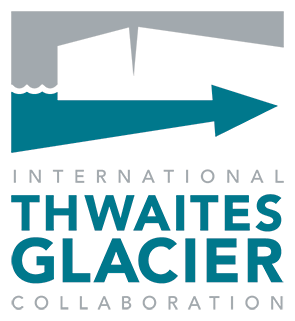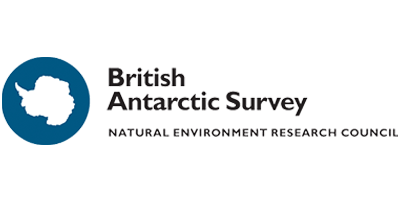
Have you ever wanted to ask a scientist your questions about Antarctica? As part of our 2021 Antarctica Festival, we asked people around the world to send our scientists questions about Antarctic science, wildlife, careers, and more. The questions covered everything from how scientists from different countries collaborate, to what the future holds for Antarctica, and our researchers answered!
Here is a sample of questions people asked our Antarctic scientists!
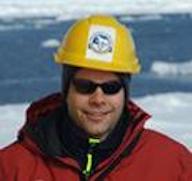
Question: Who coordinates all the nations involved in Antarctic Research so there is no overall in who is studying what? I just imagine two research ships from different nations bumping into each other. Answered by Dr. Frank Nitsche, Lamont-Doherty Earth Observatory.
There is lots of international coordination and collaboration between different nations! While much of it is regulated by the Antarctic Treaty, different agencies manage different parts. For example the main group for science coordination is the Scientific Committee of Antarctic Research (SCAR). While much of the focus of SCAR is on the science directly, it also provides an important platform for scientists to talk together about upcoming plans and to coordinate projects. Researchers of the different ships can share directly their plans to try to make sure that their work is going to complement each other rather than duplicating work.
Knowing each other through the SCAR community and other meetings helps, however, it does happen that research ships end up going to the same area. Sometimes this is on purpose, but it can also be because the coordination didn't work as planned, or that the ice conditions caused a change in plans. It is important to note that planning and doing the science are often very different when working in Antarctica. Weather, and logistics play a large role in our work there.

Question: Reedy Glacier is named after my husband's grandfather. I hope some day the family can visit it, but suspect it is shrinking. What is the current status, and how quickly do we need to plan out visit? Answered by Dr. Richard Alley, Penn State University.
Wow, Rear Adm. James Reedy, USN, Commander of the US Naval Support Forces, Antarctica, 1962-1965! For now there is no need to worry about Reedy Glacier. Antarctica is losing mass overall, but Reedy Glacier (map) is well removed from the sites that are changing rapidly. Using this graphic interactive you can see that the regions losing mass do not include Reedy Glacier.
What is causing the overall ice loss in Antarctica? It is primarily from human-caused climate change, mostly because our greenhouse-gas warming has shifted the winds around Antarctica, which has affected the ocean, and this has affected the ice. All these pieces are connected! Ice is constantly moving, flowing under its own weight. Where both air and water are really cold, ice that flows into the ocean typically remains floating but attached to the land. This thick layer of ice is called an ice shelf. Ice shelves are critically important in Antarctica. They push back against the land-based ice (we call this “buttressing”, much like a flying buttress helping hold up a gothic cathedral). Ice shelves thus keep the ice sheet bigger and the ocean smaller than if there were no ice shelves! But ice shelves are vulnerable to warming ocean water that can thin and melt them.
The ice mass loss you see in the linked graphic interactive has occurred in response to climate changes we have experienced.Our biggest worry is that the thinning at Thwaites will extend inland rapidly if we continue to warm the world, and remove the ice all the way to the downhill end of Reedy Glacier. This would raise global sea level ~3 meters. However, even then Reed would still be there, just steeper and ending in the ocean rather than the West Antarctic ice sheet!
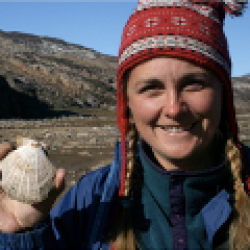
Question: I have recently completed an honours degree in environmental science and it is my dream to work in Antarctica. I am wondering how to gain a career there, or even if there are placements or internships? Answered by Dr. Brenda Hall, University of Maine.
There are different career opportunities in Antarctica. This link explains some of the options in the US Antarctic Program. If you are interested in doing science, this usually requires an advanced degree like a Masters or a PhD. Many people begin their science careers in Antarctica as graduate students. If you are not interested in an academic career, there are science support jobs in the Antarctic. Some of these involve doing science such as working in labs or managing laboratory facilities on station. However, most of the science support jobs in Antarctica are logistics-related and cover a wide range of fields. Many of these jobs are seasonal but they are one way to experience Antarctica and work around the science to see if it is truly your area of interest. There are still other Antarctic-related jobs are at funding and science research support agencies like National Science Foundation (NSF) in the US, or National Environment Research Council (NERC) in the UK, both related to the funding of Antarctic projects. However, most of those positions have limited opportunity for travel to the Antarctic.
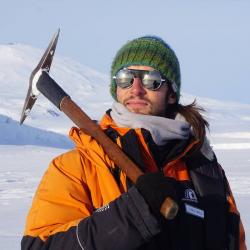
Question: How many walruses did you find and do you see penguins every day? Answered by Dr. Christian Wild, Oregon State University.
Walruses are fascinating animals - they have two prominent tusks, weigh up to 2000 kg (4400 lbs) and can dive to 500 m (1640 ft) on their hunt for shrimp/crabs and sea cucumbers. Although they hang out in cold water and warm up in the sun on sea-ice covered areas, we don't find them around Antarctica, because they only live around the North Pole. Similarly, polar bears also only occur in the Arctic, our planet's wild North.
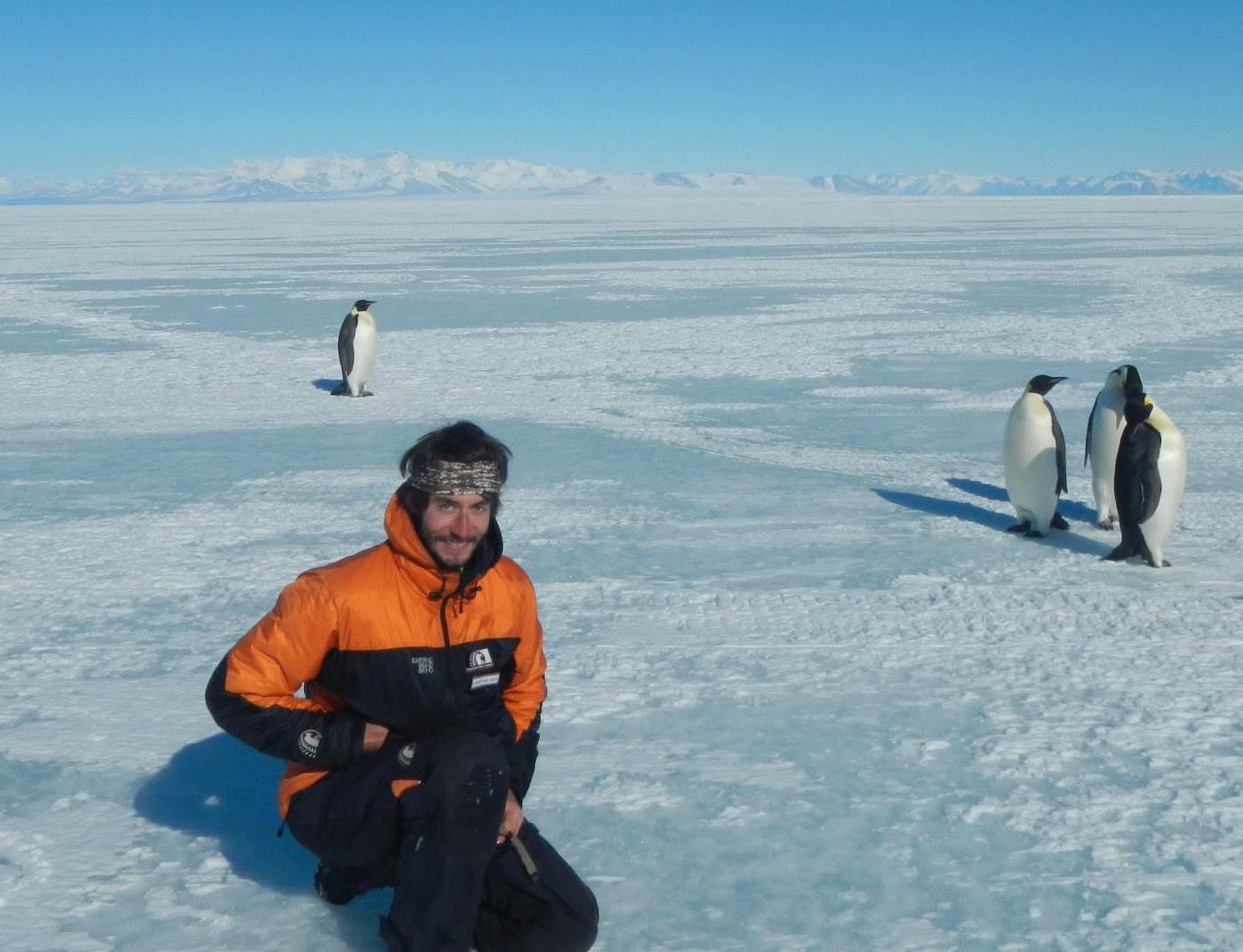
The closest animal to a Walrus that lives in Antarctica is called an elephant seal, but I have never seen one yet. Penguins, however, only live in Antarctica, and in regions along the southern tips of Africa and South America. There are also penguins living on the Islands of Galapagos in the central Pacific, which must have gotten there within cold ocean waters that have their origin in Antarctica.
To answer your question, I see different species of penguins (mostly Adélie and Emperors) almost every day in January, when the warm summer sun melts the frozen ocean's surface. During the Antarctic summer the penguins are more active, but in the winter months, the ocean surface remains covered by sea ice and the penguins that stay around the Antarctic continent are less active and visible. Here is a picture of me with a penguin when I visited Antarctica for the first time in my life - an unforgettable experience! Do you know what species this one is? That’s right these are Emperors.
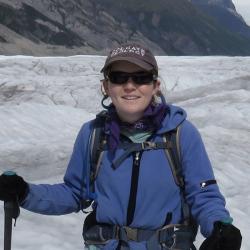
Question: How do I have a career in science when it is hard to find routes into jobs, even after graduation? Answer by Dr. Karen Alley, University of Manitoba.
One of the really exciting things about working in science is that we're always learning new things and using new technologies! While there are many careers in scientific research, a science background also gives you experience with these new technologies, critical thinking and problem solving skills that will help you in many jobs. For example, my research relies heavily on images taken from satellites, airplanes, and drones. I study glaciers and ice sheets, but these same tools are useful in oceanography, geology, plant and animal biology, environmental sciences, and many more research disciplines. But they are also useful for farmers who want to track changes in their fields, miners monitoring progress, hydrologic engineers keeping track of water flow and dam safety, city planners deciding on future building projects, environmental consultants predicting and mitigating human impacts, and many more applications. You can see there are a wide range of applications for the various skills learned and tools you may have been introduced to in your studies. These are just examples from my work; in every scientific discipline you'll learn tools that can help with research but also with solving real-world problems on many career paths.

Question: I found during COP26 that I didn't really understand how all the bits of the climate system fitted together. How can veganism help with sea level flooding? and how can we protect the large populated areas that are currently at sea level? Answer by Dr. Ben Yeager, New York University.
You have good insight into the interconnections between climate, sea level, agriculture, and human population centers. Yes reducing meat consumption is one of the simplest ways that we can reduce our individual carbon footprint - I'm vegan myself for that reason. As far as land consumption for crops, in the U.S. more crops are grown to feed livestock than humans. It takes a lot of plants to raise a cow or pig to adulthood! Perhaps, in the future, we will need to raise animals primarily through grazing nonarable land (e.g. in the mountains), leaving the productive cropland for human food.
Regarding the impact of sea level rise on cropland, I’m sure there will be some impact, but I'm unsure how important it would be as most of our farmland is toward the interior of continents, on land that is flat, but at high enough elevation to be safe from projected sea level rise. The most recent worst-case scenario for sea level rise from COP26 was in the range of ~ 2 meters over the next century. That will certainly have a large impact on coastal communities, but the vast majority of cropland will be spared direct impacts.
Yes, the majority of the world's population is concentrated near coastlines and as sea levels rise, millions of people will be forced to relocate. This is already occurring in many places, like the South Pacific islands. Populations have already been shrinking on many of the low-lying islands, from frequent flooding and saltwater intrusion into drinking water aquifers. Forced relocation due to sea level rise is called the "climate refugee crisis,” a growing concern.
You've end with an important question, "what can be done?" Some sea level rise is already in the system (an estimate from COP26 was ~0.5 meters over the next hundred years), BUT if we work to reduce our collective carbon footprint, and if governments can commit and follow through with regulations to limit greenhouse gas emissions, we can avoid the worst case scenarios! We will continue to need people like you who are passionate about the climate to study climate change, and to enact policy to ensure we protect the delicate climate system of our planet. I encourage you to pursue a career dealing with any aspect of climate change!

Question: What do you think about the renewable energy future in the Antarctic region? At what level are the facilities established and the work done now? Answered by Dr. Jan Lenaerts, University of Colorado, Boulder.
Many Antarctic research bases operate partially or fully using renewable energy (wind and/or solar) - see for example this article on Belgium’s Princess Elisabeth zero emission Antarctic Research Station: http://www.antarcticstation.org/station. Along side this cutting edge station, fields instruments are usually powered by batteries that are charged by solar energy. For example, the weather stations installed on the glacier as part of the Thwaites Project, are powered by solar. Given that Antarctica receives 24-hour long sunlight during the austral summer, and is the most windy continent on Earth, there is virtually unlimited potential for renewable energy. To my knowledge, there is no energy generation on Antarctica that is transported elsewhere (yet), since Antarctica is a protected area that cannot be used for any commercial goals.

Question: How will the collapse of Thwaites Glacier affect the contribution of the future of Antarctica? Answered by Helen Ockenden, University of Edinburgh and Rachel Carsen, University of Houston.
Helen and Rachel answered this question in two different ways! We thought it was fun to see the different responses.
HELEN: Thwaites Glacier is one of the largest and fastest retreating glaciers in West Antarctic. If all the ice in the glacier melted then global average sea levels would rise by at least 0.6 m. Since Thwaites Glacier is right in the center of the West Antarctic Ice Sheet, and drains a deep subglacial basin, its collapse would destabilize and possibly collapse the whole West Antarctic Ice Sheet, leading to a rise in global sea levels of over 3 meters.One of the key aims of the ITGC project is to work out exactly how likely Thwaites Glacier is to collapse, and the possible timescales for a collapse. Currently we think that we are close to the start of the collapse, depending on whether or not the glacier stabilizes on a subglacial ridge near to the front of the glacier. Once it retreats past this ridge, there are very few things that could stop the retreat, because as the ground beneath the ice gets deeper the retreat of the glacier will speed up and be harder to stop. Once this begins, the modeling studies tell us that it could take anywhere between 100 and 2000 years for the glacier to collapse, depending on the climatic conditions. Hopefully combining all the different techniques being used in the Thwaites Glacier Collaboration will allow us to get a better understand how fast this collapse could be. It’s important to remember though that the actions we take in our daily lives, through reducing our personal environmental impact and voting/lobbying for governments to take stronger action against climate change, can also have an impact on how likely Thwaites Glacier is to retreat in the future!
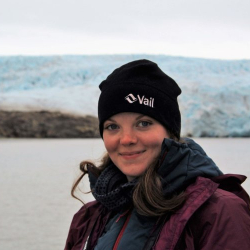
RACHEL: The West Antarctic Ice Sheet drains most of its ice through three regions: the Ross Sea, Weddell Sea, and the Amundsen Sea (where Thwaites Glacier is!). Think of the ice sheet like a three-legged stool. If you take out one of the legs, the stool cannot support itself. In the same way, Thwaites Glacier is like one of those stool legs. As Thwaites Glacier loses ice and becomes more unstable, the rest of the ice sheet may also become unstable. This means that the entire ice sheet may contribute much more to future sea-level rise.
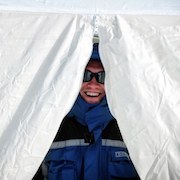
Question: I am fascinated by the Antarctic! Please share the most exciting experience or research you have undertaken, and the most interesting discovery. Answer by Andrew Hoffman, University of Washington.
Antarctica is an extremely challenging place to work because of weather and tight timelines for delivering camp supplies. Working in teams with really diverse skill sets is necessary to accomplish both the science and to stay safe. I’ve found the shared living and conducting science in an environment where the science goals motivates cultural exchanges to be pretty unique to the kind of work that happens in Antarctica. It’s definitely the thing I miss most.
The most interesting discovery I’ve been a part of in Antarctica was in connection with a deep field campaign at Hercules Dome in 2019. Hercules Dome is the prospective site of the next deep U.S. ice core. It’s a really remote location deep in the Antarctic interior that requires a connecting flight through the South Pole. Deep field camps like Hercules Dome are really flat as ice deforms almost like pancake batter as it spreads out across the landscape hidden beneath it, smoothing away all features at the surface. As part of the first team to do fieldwork at the site of Hercules Dome, I helped build a runway to land a large plane transporting cargo and fuel to this site. With the science equipment delivered by the plane we were able to map subglacial valleys the size of the Yosemite Valley hidden below 2km of ice. When we collected these data, we watch the subsurface reflector come in on a screen being towed by a skidoo. To see the dramatic relief of the landscape beneath the ice was interesting; the landforms preserve the signature of a time when glaciers in the interior of the ice sheet flowed much faster than ice that flows there today. The sustained snowfall that feeds the glaciers that carve landscapes like the Yosemite Valley are also able to completely mask these features in time.

Question: What do you guys do in your free time down South? Answered by Dr. Nick Holschuh, University of Washington.
Free time in Antarctica is complicated -- when we can work (after we have arrived at our remote field site, and all of our camp and instruments are set up) we tend to work continuously until we are picked up and brought out of the field. But there tends to be lots of waiting to get to our work site, or for the weather to improve, so you need to have lots of fun things that you can pick up and put down quickly. That means we read a lot and watch movies that we have on our computers. Many people within the US Antarctic program also really like the card game "Cribbage", so that tends to be played often.
When I am not in the field I have always been a big fan of science fiction, so I really enjoy reading in my free time! I also like to play board games, and I grew up with two older brothers who played a lot of classic video games as kids. One of the more unique things I do now is write code to modify those classic games, using a lot of the skills I developed through my scientific work! I also like to bicycle, and during the summer I bike over to a nearby town each weekend to get Indian food for lunch and read at the outdoor cafe.
Question: What'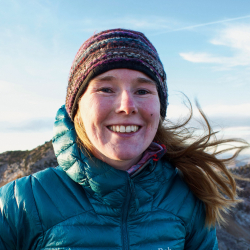 s the warmest temperature degrees C, and the coldest temperature in Antarctica? Answer by Louise Borthwick, Temple University.
s the warmest temperature degrees C, and the coldest temperature in Antarctica? Answer by Louise Borthwick, Temple University.
The warmest temperature recorded in Antarctica was 20.75 C (~ 70 F) and that was recorded at the Brazilian station on Seymour Island in the North East of the Antarctic Peninsula on February 9th2020, however that temperature was later removed from the record by the World Meteorological Organization as they noted that an improved radiation shield at the station location was responsible for a bias error in the reading. The current warmest record is 18.3 C (~ 65 F) recorded on the 6th of February 2020 at Argentinian Esperanza station. The coldest temperature was -89.2 C (~-128.6F) which was recorded in 1983 at Vostok station in East Antarctica.
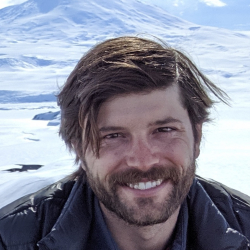
Question: How is life working at a research station in the Antarctic areas? Also are there any hopes for the White Continent's future? Answered by Dr. Peter Washam, Georgia Institute of Technology.
Life on an Antarctic research station is a mix of the comforts of everyday life and the excitement of being very removed from the rest of the world. There is always really good food in the cafeteria, and meal times set the daily rhythm. Work days are long either outside of the base on the ice or inside a lab, but when there is free time there are exercise facilities and places for cross country skiing. All in all it is a wonderful experience that brings people together and forms close friendships very quickly.
Much of the future of Antarctica rests in our hands. The changes we see now are linked to the increase in carbon dioxide and greenhouse gas emissions that began in the nineteen hundreds, so future climate changes will respond to what we do to reduce these emissions moving forward. This will require both big and small changes, but we can all contribute to reducing the amount of energy that we use each day. Simple decisions like turning off the lights when you leave a room, turning the heat or air conditioning off in your house when you leave, or walking or riding a bike instead of driving a car are all great ways of reducing these emissions.
 Question: What happens when you get sick or what do you do if you get frostbite? Answer by Allison Lepp, University of Virginia.
Question: What happens when you get sick or what do you do if you get frostbite? Answer by Allison Lepp, University of Virginia.
For scientists working on research vessels, like the Nathaniel B. Palmer, there are medically-trained staff who can help out with minor sickness, like a cold (or, more commonly, sea-sickness!). We do much of our work outside on deck of the ship, but we always wear appropriate clothing to prevent frostbite, including thick socks, steel-toed boots, insulated jackets, and head/ear protection. It is a luxury to be able to quickly relocate inside the ship where the temperature is warm! Frostbite is not a concern for ship-based scientists in the Antarctic, as it is for those who work on the ice.
For those working on ice wearing the right clothing and boots is critical. For U.S. scientists, NSF issues boots and coats for scientists going south to help keep them warm and prevent frostbite. Before going to Antarctica everyone visits the doctor to be thoroughly checked to be sure they are healthy and able to handle the cold weather and difficult conditions. There is medically trained staff support at the bases but not in the remote camps, but every camp has first aid training.

Question: Are there trees in Antarctica? Answered by Michelle Maclennan, University of Colorado, Boulder.
Antarctica is like a giant sheet of ice with a few rocks and mountains poking up out of it. There are no trees in Antarctica today, in fact there are very few plants there at all! It is covered with ice and snow year round, and it is very cold so there are few places for plants to grow! Additionally, it is completely dark in the winter so for several months in the year there is no sunlight to help plants grow. There is one type of grass that grows near the coast, and there are mosses, lichen and fungi that grow in that area as well. In short - the few things that grow in Antarctica need to be able to survive in the extremely cold environment.
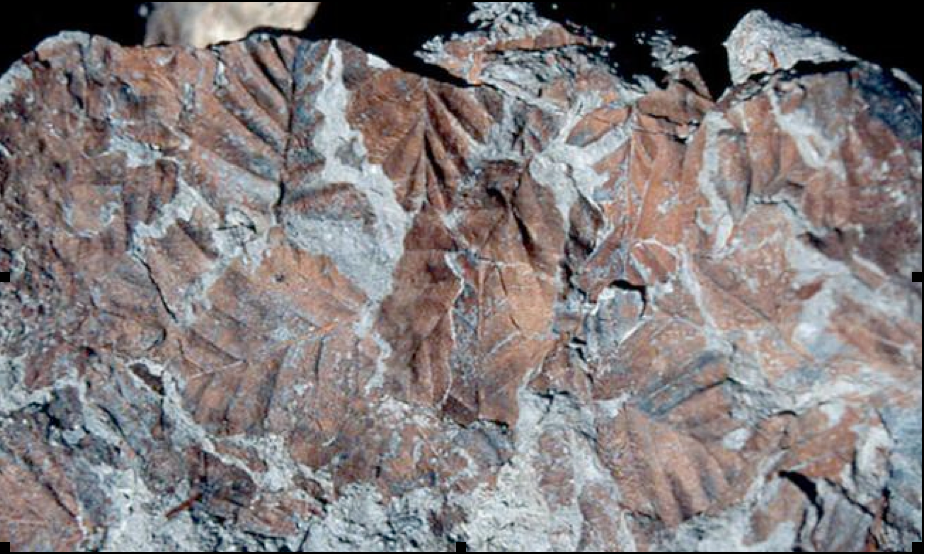
Antarctica today is mainly a giant sheet of ice, but it wasn’t always this way. Over millions of years in Earth’s past, the climate of Antarctica has warmed and cooled. During some of the past warm periods, trees did grow in Antarctica! Four million years ago (during a period called the Pliocene), global temperatures were 3-4 degrees C higher than today, and beech trees grew at the South Pole. This was known as the “last forest of Antarctica." The photo to the left from J. Frances and A. Ashworth, shows fossilized beech tree leaves found just 300 miles from the South Pole in the Transantarctic Mountains! This area has long been covered in a frozen ice sheet.
If we go back even further in time to 100 million years ago, a period called the Cretaceous, the world was much warmer than today, and Antarctica was ice free! There were large areas of forest in Antarctica, composed of pine trees and ferns. There were even dinosaurs! The second photo by William hammer (NSF) shows the pelvis of a brachiosaurus dinosaur which was found at the Beardmore Glacier, Antarctica that flows through the Transantarctic Mountains to the Ross Ice Shelf.
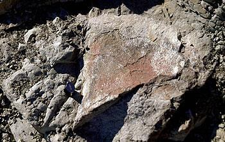
Over the past millions of years, Antarctica and its climate have changed a lot. It has gone from ice-covered to warm and forested, and back again. During the warm periods, there were trees in Antarctica, and during the cold periods, there were not! It all depends on the environment.
